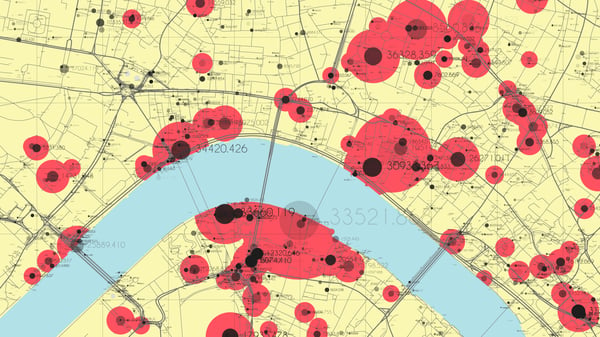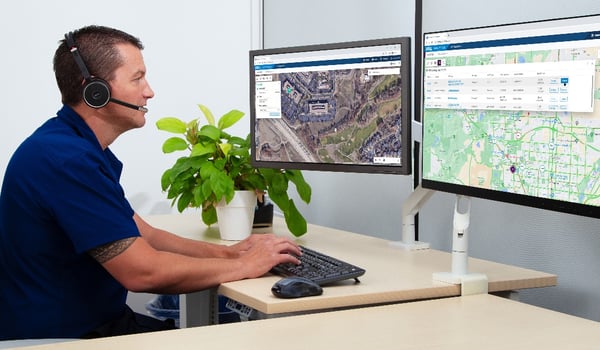4 Must-have Data Points for Dispatch-Billing Alignment and Maximum Reimbursement
Are You Risking Lives When Trying to Save Lives?
Personal experience certainly makes a believer out of you
Was this information valuable?

Personal experience certainly makes a believer out of you. While working for a former EMS agency, I was present to see firsthand what happens when safety takes a back seat in an EMS organization. It wasn’t until a sentinel event that resulted in a fatality of a 12 year old did the organization realize that change was needed. To give you some perspective on losses, in just an 18-month period, ambulances were averaging 1.5 preventable crashes per month. These crashes injured employees, patients and others in vehicles. Several ambulances were so damaged they had to be permanently placed out of service.
So, what contributed to these losses? At the time, the organization had no idea what it meant to have a culture of safety. Leadership was lulled into thinking that ambulance crashes were common and simply the cost of doing business. However, as the losses mounted, so did the expenses. A retrospective financial analysis indicated that the organization had experienced close to a quarter of a million dollars during that 18-month period. More than 14 direct expenses related to a crash were identified, which were not covered by the insurance carrier. Those expenses hit directly at the bottom line.
The wakeup calls to reform came from many different sources, one was from the insurance carrier. When a non-renewal letter was received, it became a game changer. A search by the insurance broker found no other carrier wanted to assume the risk of an organization with a terrible loss history. After several high-level meetings with the insurance carrier, they agreed to extend the policy period if Road Safety was installed in all ambulances and crash rates declined. The order was placed that day.
The Journey to Zero Ambulance Crashes & Injuries
In addition to Road Safety, leadership decided the next move was to create a safety task force. The task force began looking for vehicle safety solutions that were not only inside EMS but outside EMS as well. They looked for other transportation companies that had successful safety programs and contacted them to see if they would share their insight. The collected information coupled with the driver feedback system from Road Safety started the journey to “zero” crashes and injuries.
The initial beginnings of the Road Safety program began with developing specific policies, training everyone in the organization on the use of Road Safety, timeline of the rollout and setting goals. One interesting phase of the rollout timeline was the blind study. During this phase, most of the Road Safety devices had already been installed, but the speakers were off and not providing feedback to the driver. Road Safety reported 0.03 average miles between violation (seatbelt, unsafe speed, unsafe g-forces and no spotter while backing). Basically, an ambulance couldn’t get out of the parking lot without incurring a violation.
After 18 months into the program the fleet was at 239 miles between violations and not one preventable crash.
Shortly after all the devices were installed in all the ambulances, the speakers were turned on and began providing the important feedback to the drivers. Immediately, Road Safety began to make drastic improvements in the way the vehicles were operated. In less than one month from when the speakers were turned on, average miles between violations increased from 0.03 miles to more than miles. After three months, it increased to 16 miles. This trend continued, and after 18 months into the program the fleet was at 239 miles between violations and not one preventable crash. It became obvious that Road Safety was the key in preventing crashes and saving the organization hundreds of thousands of dollars. The insurance carrier also noticed the results and began to reduce the coverage premiums.
Creating a Just Culture
An interesting side effect of Road Safety was the increase of employee engagement. Staff who never expressed interest in safety began to realize the benefits not only for themselves, but their patients and the motoring public. This helped launch other safety initiatives (Just Culture) that were needed desperately.
The Just Culture program had three main tenants:
- Education and buy in. Leadership believed to have a successful safety program, there needed a complete buy in across the board and a way to demonstrate to the staff that it really does work. Safety was tied to every aspect of the organization; including vehicle safety, patient safety, fire safety workplace hazard, stretcher safety and patient movement. The safety committee highlighted these safety initiatives during monthly “safety breakfasts.” Staff started recognizing this was something to take seriously and to make a priority.
- Incentive programs. Safety goals were set, and when achieved, staff were rewarded.
- Measure success. A balanced score card approach with the motto: what you don’t measure you can’t improve. By measuring everything there was a transparency within the organization that held accountability.
Read: The Road Safety Experience: Medic Ambulance is Changing their Culture One Step at a Time
Additional Road Safety Benefits
While Road Safety reduced preventable crashes and the expenses associated with, there was another largely overlooked benefit that wasn’t recognized. Because the fleet was being operated less aggressively, some wearable parts (brakes, rotors, tires, shocks) were replaced less frequently, saving the organization thousands of dollars. Fuel consumption also decreased as hard acceleration and excessive idling was essentially eliminated. There was a sizable decrease in the cost per mile for the fleet.
The Safety of Your Community & Crew Starts with You
Maybe your organization has priorities that may include financial, clinical and operational initiatives. All of which are good priorities. As a leader, if you don’t include the safety of your staff and the patients in your ambulances as an organizational priority, you are on a path of destruction. It’s a guarantee. I speak from experience, and as the coin of chance seemed to always land favorably, one day it didn’t, and almost 200 people were close to becoming out of work. They survived, although there’s a little boy that never had his next birthday when his life was lost on the pavement. Be a responsible leader in EMS, and stop believing that safety costs too much money. You can’t afford not to as it’s one of the best investments you can make. Remember, everyone has the right to go home safe. It starts with you!
Related Posts
How EMS Agencies Can Reframe Need and Refocus Resources With Geospatial Analytics
How To Minimize Radio Chatter and Reduce Guesswork With Smarter Dispatch Resource Management
ZOLL Pulse Blog
Subscribe to our blog and receive quality content that makes your job as an EMS & fire, hospital, or AR professional easier.
ZOLL Pulse Blog
Subscribe to our blog and receive quality content that makes your job as an EMS, fire, hospital, or AR professional easier.




